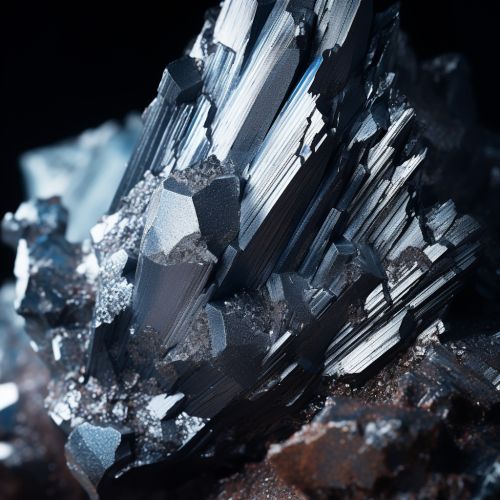Magnesium
Introduction
Magnesium is a chemical element with the symbol Mg and atomic number 12. It is a shiny gray solid which bears a close physical resemblance to the other five elements in the second column (group 2, or alkaline earth metals) of the periodic table: all group 2 elements have the same electron configuration in the outer electron shell and a similar crystal structure.
Properties
Physical Properties
Magnesium is the eighth most abundant element in the Earth's crust and the fourth most common element in the Earth (after iron, oxygen and silicon), making up 13% of the planet's mass and a large fraction of the planet's mantle. It occurs naturally only in combination with other elements, where it invariably has a +2 oxidation state. The free element (metal) can be produced artificially, and is highly reactive (though in the atmosphere, it is soon coated in a thin layer of oxide that partly inhibits reactivity – see passivation).


Chemical Properties
Magnesium, in its elemental form, is a silver-white, highly reactive metal. This reactivity is due to the fact that magnesium has two valence electrons (in its outer shell) that it readily gives up to achieve a stable, electron configuration. When these electrons are lost, magnesium forms a +2 cation.
Occurrence and Production
Magnesium is the eighth most abundant element in the Earth's crust. It is found in large deposits of magnesite, dolomite, and other minerals, and in mineral waters, where magnesium ion is soluble. Although magnesium is found in over 60 minerals, only dolomite, magnesite, brucite, carnallite, talc, and olivine are of commercial importance.
Uses
Magnesium is used in a wide variety of applications from medical and dietary to technological. It is also used in the production of some metals, in the creation of fireworks, and in certain types of high-temperature resistant and lightweight materials.
Biological Role
Magnesium ions are essential to all living cells, and is the 11th most abundant element by mass in the human body. The ions are necessary for the activity of many enzymes, especially those involved in ATP metabolism. A large number of proteins are known to bind magnesium ions to function properly.
Health and Dietary Considerations
Magnesium is an essential element in biological systems. Magnesium occurs typically as the Mg2+ ion. It is an essential mineral nutrient for life and is present in every cell type in every organism. For example, ATP (adenosine triphosphate), the main source of energy in cells, must be bound to a magnesium ion in order to be biologically active.
Environmental Impact
Magnesium compounds, primarily magnesium oxide (MgO), are used as a refractory material in furnace linings for producing iron, steel, nonferrous metals, glass, and cement. Magnesium oxide and other magnesium compounds are also used in the agricultural, chemical, and construction industries.
